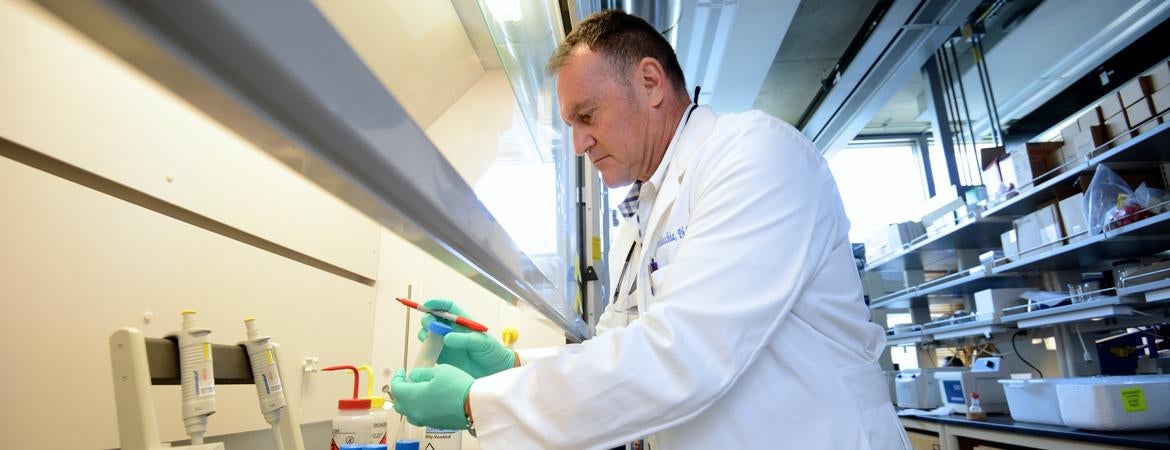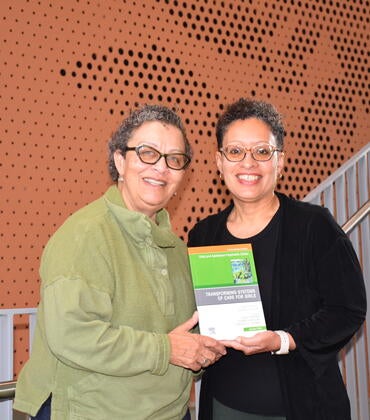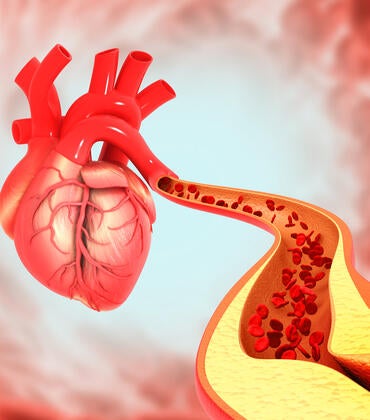
Recently, a research team led by Maurizio Pellecchia at the University of California, Riverside, discovered a way for chemotherapy drug paclitaxel to target migrating, or circulating, cancer cells, which are responsible for the development of tumor metastases.
The team was successful in getting the drug to piggyback on 123B9, an agent they devised to target an oncogene called EphA2 (ephrin type-A receptor 2). EphA2 spreads cancer by allowing malignant cells to migrate from the primary tumor into circulation and eventually to adhere to other tissues.
“But the exact mechanism by which 123B9 binds to its target remained elusive, which hampered the design of even more potent and effective agents,” Pellecchia said.
To meet this challenge, the team first derived a new and more effective EphA2 targeting agent, and subsequently, in collaboration with Jikui Song, an associate professor of biochemistry at UCR, determined the three-dimensional structure of this agent in complex with the ligand-binding domain of the receptor, hence allowing the team to see exactly how their agent interacts with EphA2. This allowed the team to further derive novel agents far more potent than 123B9.
“The structural studies gave important clues to us on how our agents interact with the EphA2 at the atomic level,” said Pellecchia, a professor of biomedical sciences at UCR’s School of Medicine, who holds the Daniel Hays Chair in Cancer Research. “We were thus able to modify 123B9 extensively, which resulted in several intermediary agents, and ultimately in the novel, potent, and selective agents 135H11 and 135H12.”
Study results appear in ACS Chemical Biology.
Pellecchia’s team showed a few months ago that the preliminary agent 123B9 functions best as a Trojan horse when conjugated chemically to chemotherapy, in particular by transporting paclitaxel to EphA2 expressed on cancer cells, eventually killing the cells and reducing metastasis. The molecules 135H11 and 135H12, on the other hand, are able to potently block EphA2 — they are approximately 100 times more powerful than 123B9 — and offer direct therapeutic applications even without drug conjugation.
“These agents can still carry a chemotherapy drug to the cancer cell, but they don’t need to, being anti-metastatic and potent agents themselves,” said Pellecchia, who serves as the founding director of the Center for Molecular and Translational Medicine at UCR. “When they bind to EphA2, they cause internalization and degradation of the receptor inside the cell, thus preventing cancer cells from entering circulation and metastasizing.”
The research team tested 135H11/H12 on pancreatic cancer cells and found these displayed remarkable anti-migration/invasion properties, corroborating Pellecchia’s central hypothesis that such agents can be used as novel and effective therapeutics to treat cancer metastases.
“Even with fairly low concentrations of 135H11/H12, we were able to wipe out EphA2 in pancreatic cell lines,” Pellecchia said. “Most solid tumors require EphA2, so these agents have the potential for applications beyond pancreatic cancer, such as ovarian, prostate, lung, and breast cancers, as well as melanoma.”
The UCR Office of Technology Commercialization has filed a patent application on the technology.
“We are actively seeking investors to expedite bringing these potent agents to clinics,” Pellecchia said. “123B9 was essentially a prototype agent and worked very well at the research level and for proof of concept studies. By designing and characterizing the novel agents 135H11 and 135H12, we have moved these studies much closer to drug development.”
The study was supported by the National Cancer Institute of the National Institutes of Health. The March of Dimes Foundation provided additional support.
Pellecchia and Song were joined in the study by UCR’s Luca Gambini (co-first author), Ahmed F. Salem (co-first author), Parima Udompholkul, Xiao-Feng Tan, Carlo Baggio, Neh Shah, and Alexander Aronson.
Pellecchia’s lab has made small amounts of 135H11 and 135H12 available to other labs free of charge for research purposes.



